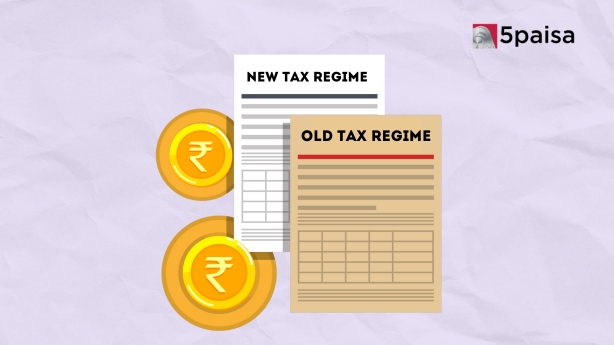3 Technologies Disrupting Finance in 2025: AI, Blockchain & Big Data Revolution
Post Office RD Interest Rates 2024

Although you know necessity of saving money, you may not be motivated to do it because you have shortfall. But you have option. Instead of depositing one single lump sum for fixed period in fixed deposit, you can invest small pre-determined amounts as monthly instalments in recurring deposit (RD) account. A post office RD is one of the most popular savings alternatives to regular fixed deposits and other long-term plans offered by post offices. When compared to banks, post office recurring deposits have emerged as the most popular. One of the reasons for their appeal is the excellent interest rate and high profit potential at maturity. Post offices are popular in India for a variety of reasons, the most notable of which is that they offer services other than mail delivery. Post offices provide working-class individuals with a variety of savings options, including life insurance and modest savings plans. Individuals choose recurring deposits over other traditional fixed deposits and long-term savings options offered by post offices.
Apart from providing mail services post office offers many other financial service too their customers in aspect of savings & life insurances. Post Office Recurring Deposit (RD) schemes have gained significant popularity among investors due to their attractive interest rates & flexibility. In 2024, Post Office RD Interest Rates offered stand at 6.50% per annum compounded quarterly. Post Office RD Interest Rates India is very lucrative option for individuals looking to invest their savings for medium-term goals. Let's dig deeper into features, benefits, & intricacies of Post Office RD Interest Rates India. Post Office Recurring Deposit Interest Rate 2024. Post office RD calculator allows investors to fast calculate their returns/maturity amount generated from RD accounts with post office. With this online tool, individuals only need to enter deposit amount, rate of interest, & tenure for calculation of their maturity amount. calculator shows results instantly & is free to use.
Find Post office rd interest rates 2024 calculator by clicking here.
https://www.5paisa.com/calculators/rd-calculator
Tenure of Recurring Deposit:
Post Office RD Interest Rates 2024 tenure is fixed at 5 years, making it ideal choice for individuals seeking medium-term investment options. However, investors have flexibility to extend tenure for additional 5 years, up to maximum of 10 years. This enable investor to modify their strategy of investment as per their financial ambitions & needs. Post office rd interest rates 2024 India is safest way to mobilise your saving & channelize it in to safest & secure avenue possible.
Features of Post Office RD Interest Rates:
1. Competitive Interest Rate:
Currently post office rd interest rates 2024 stands at 6.50% per annum compounded quarterly, offering competitive returns compared to other investment avenues.
| Tenure | RD rates of General Citizen | RD rates of Senior Citizens |
| 5 years | 6.50% | 6.50% |
Note: Post Office Recurring Deposit Interest Rate 2024 mentioned above is valid as of 1 July 2023. Post office rd interest rates 2024 for 5 years is subject to change & individuals should check same before opting for RD. Post office rd interest rates 2024 for senior citizens are same 6.5% with tenure of 5 years.
2. Flexible Deposit Options:
Investors can start with minimum deposit of Rs. 10 per month, making it accessible to individuals from all income groups. As regarding post office rd interest rates 2024, there is not only no upper limit on deposit amount, but also it allowing investors to invest according to their financial capacity.
3. Joint Account Facility:
Post Office RD accounts can also be opened jointly by two individuals, not only providing flexibility but also convenience in managing investment best way possible. Indian nationals who are over age of eighteen would be considered qualified to open joint or single RD account with Post Office.
4. Penalty for Delayed Deposits:
Penalty of 5 paise on each ₹ 5 is charged for missing deposit, this regulation is encouraging investors to not only maintain regularity in their contributions but also to keep process as smoothen as possible. Let’s understand this by example.,
• If account is started on 15th of each month, further deposits into the RD account should be made on that same day. If account holders fail to pay installments by the given deadline, they are permitted to deposit on the last day of each month.
• If payment is not made by the due dates, a penalty of ₹1 per deposit of ₹100 will apply.
• After four consecutive default payments, the RD account at Post Office is closed and can be reactivated after two months of the last default.
• If the RD account is not resurrected within two months, it will become inactive, preventing additional deposits.
5. Rebate on Advanced Deposits:
Investors can avail of rebates on advanced deposits made for at least 6 months, providing incentive for proactive savings habits. To encourage consumers to deposit money in advance, the post office RD offers a discount on advance deposits. The refunds may not amount to much, but they might add to significant savings for other uses.
6. Premature Withdrawal & Loan Facility:
Investors can withdraw up to 50% of available funds after one year of opening RD account. Additionally, loans against RD accounts are available, providing liquidity in times of need. In simple words, one can use their Post Office regular deposit to support their essential needs. However, after a year after starting the account, customers can take up to 50% of the existing cash. The withdrawn monies would be subject to a simple rate of interest, and they must be reimbursed in full, including the relevant interest.
How to Calculate Post Office RD Returns?
Maturity amount of Post Office RD can be calculated using compounding interest formula:
A= P×(1+ NR) (Nt)
Where:
A = Maturity Amount
P = Recurring Deposit
N = Number of times interest is compounded
R = Rate of interest
t = Tenure
Dates of Deposit:
Investors are required to make 60 deposits during tenure of Post Office RD, i.e., one deposit every month for 5 years. deposit dates depend on date account was opened, with grace period provided for timely deposits.
Penalties on Delayed Deposits
Post Office RD accounts allow maximum of 4 defaults for delayed deposits. penalty of 5 paise for every ₹ 5 is charged for missed deposits, incentivizing investors to maintain regularity in their contributions.
Post Office RD Rebate:
Rebates are provided for advanced deposits made for at least 6 months, encouraging investors to plan their savings in advance & avail of additional benefits.
Premature Withdrawal:
Investors can withdraw up to 50% of available funds after one year of opening RD account. However, withdrawn amount is subject to applicable interest rates & needs to be repaid in lump-sum along with interest applicable.
Eligibility of Post Office RD Interest Rate:
To open Post Office RD account, individuals must be Indian nationals above age of 18 years or minors above age of 10 years. Parents or guardians can open & operate accounts on behalf of minors.
Documents Required to Open RD Account:
To open Post Office RD account, individuals need to provide identity & address proof, along with duly filled application form & photographs.
TDS on Post Office RD:
Interest earned from Post Office RD is subject to TDS if it exceeds threshold limit. TDS rates vary based on whether PAN details are provided or not.
Loan Against Post Office Recurring Deposit:
Loans against Post Office RD are available after 12 months of continued deposits, providing liquidity against RD investment. You can apply for a loan against your National Savings Recurring Deposit by filling out Form 5. To be eligible for the loan, you must keep the account active for a year and deposit 12 payments. You may borrow up to 50% of the total credit on your RD account. The account holder has the option of repaying the loan in one big sum or in equal payments. The account holder must return the whole amount before the RD matures. The loan's simple interest rate will be 2% plus the relevant RD interest rates for the RD account. Interest will be imposed from the date of withdrawal until the date of full repayment, in proportion to the amount owed.
Conclusion:
Post Office RD schemes offer attractive interest rates & flexible investment options, making them preferred choice for investors seeking medium-term savings avenues. With features like competitive interest rates, flexible deposit options, & additional benefits such as rebates & loan facilities, Post Office RDs provide comprehensive investment solution for individuals from all walks of life. The interest rate offered by post office is icing on cake. Even those with marginal salaries may invest thanks to compound interest computation & ₹10 minimum deposit. Opening post office recurring deposit account should be done after checking current interest rates, as they are subject to change annually.
The RD calculator is necessary for investors of small sums of money on monthly instalment basis for fixed tenure. They can thus prefix monthly instalments according to their affordability. Recurring deposits are regarded as one of the greatest strategies to make long-term or short-term investments at reasonable monthly rates. The post office's interest rate is the cherry on top of the cake. With a minimal deposit of ₹10 and compounding interest, even individuals on marginal incomes may invest. Interest rates fluctuate every year; therefore, it is best to verify the current rates before starting a post office recurring deposit account.
Frequently Asked Questions
Can I withdraw my deposit before 5 years in Post Office RD?
Which RD is better, bank or post office?
Is nomination facility provided by Post Office RD account?
- Flat ₹20 Brokerage
- Next-gen Trading
- Advance Charting
- Actionable Ideas
Trending on 5paisa
Personal Finance Related Articles
Disclaimer: Investment in securities market are subject to market risks, read all the related documents carefully before investing. For detailed disclaimer please Click here.

 5paisa Research Team
5paisa Research Team
 5paisa Research Team
5paisa Research Team




